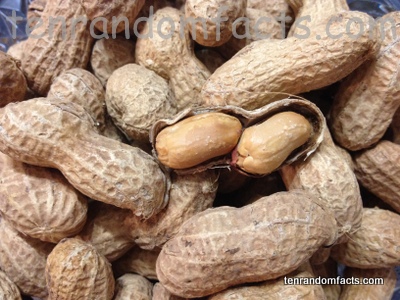Do peanuts drive you absolutely nutty?
- Peanuts are a type of nut, or botanically a legume, that is popularly eaten across the world, and the plant species is native to South America and as such, the nut is a major part of the cuisine there.
- The scientific name of the plant peanuts grow on is Arachis hypogaea, and it is from the family Fabaceae, the family of legumes.
- ‘Peanuts’ are also known as ‘ground nuts’ and are sometimes called ‘goobers’ or ‘goober peas’.
- The peanut plant produces yellow flowers, and after they are fertilised, the petals fall off, after which the tip of the stem heads towards the ground and buries itself to produce the nuts, or technically ‘seeds’, in a pod underground.
- The mesh-like, textured brown pods of peanuts grow to be approximately 3 to 7 centimetres (1 to 3 inches) in length and while the nut is not a ‘nut’ by botanical definition, it is utilised as one in the food industry.
- Although two is most common, between one to four creamy coloured individual peanuts can be found in a pod, and they are covered in brown to red skin that is easily removed; and the nuts usually darken in colour when roasted.
- China produces the most peanuts in the world, with 17 million tonnes (18.7 million tons) in the 2013 period, of the total world production of 46 million tonnes (50.7 million tons); and while the United States only produced 4% of the world’s total that year, they are the most commonly consumed nut in the country.
- Peanuts can be eaten raw, roasted, boiled, or salted, but they can also be ground into flour, or have oil extracted from them; used as an ingredient in baking, main dishes, or sauces; and commonly made into a paste to eat on bread or toast.
- Raw peanuts are extremely high in manganese; very high in fat, niacin, copper, and folate; high in thiamin, vitamin E, protein, magnesium, and phosphorus; and are a good source of iron, potassium, zinc, fibre and vitamin B6, as well as containing other vitamins and minerals
- Due to the high levels of a wide range of nutrients, peanuts have been used to feed malnourished people in times of famine; though the nuts can cause allergic reactions, as severe as anaphylaxis, and as such, many schools in some countries have banned consumption of the nuts at school.
Bibliography:
Peanut, 2016, Wikipedia, https://en.wikipedia.org/wiki/Peanut
Peanut Facts, 2016, The Peanut Institute, http://www.peanut-institute.org/peanut-facts/
Peanuts, 2016, The World’s Healthiest Foods, http://www.whfoods.com/genpage.php?tname=foodspice&dbid=101






